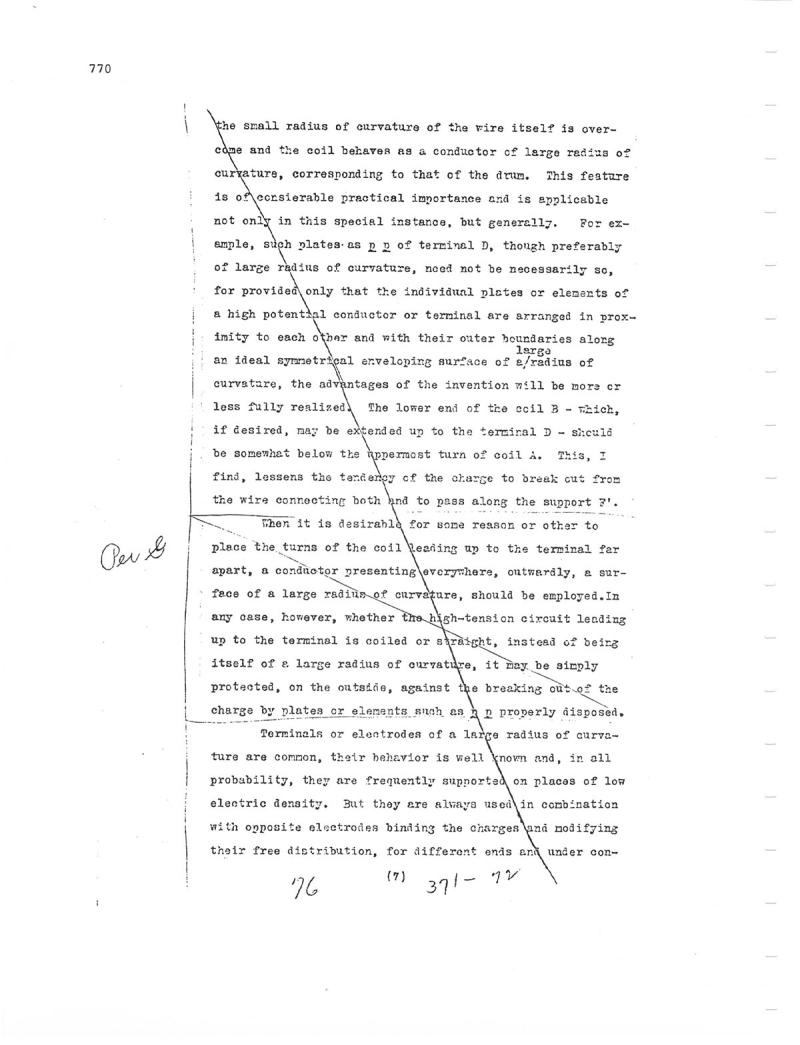
Nikola Tesla Patents
Nikola Tesla U.S. Patent 1,119,732 - Apparatus for Transmitting Electrical Energy Patent Wrapper Page 74
770 Per & 1 the small radius of curvature of the wire itself is overcome and the coil behaves as a conductor of large radius of curature, corresponding to that of the drum. This feature is of ccnsierable practical importance and is applicable. not only in this special instance, but generally. For example, such plates as pp of terminal D, though preferably of large radius of curvature, need not be necessarily so, for provided only that the individual plates or elements of a high potential conductor or terminal are arranged in proximity to each other and with their outer boundaries along large an ideal symmetrical enveloping surface of a/radius of curvature, the advantages of the invention will be more cr less fully realized) The lower end of the coil 3 - which, if desired, may be extended up to the terminal D should be somewhat below the uppermost turn of coil A. This, I find, lessens the tendency of the charge to break cut from the wire connecting both and to pass along the support F'. Then it is desirable for some reason or other to place the turns of the coil leading up to the terminal far apart, a conductor presenting everywhere, outwardly, a surface of a large radius of curvature, should be employed. In any case, however, whether the high-tension circuit leading up to the terminal is coiled or straight, instead of being itself of a large radius of curvature, it may be simply protected, on the outside, against the breaking out of the charge by plates or elements such as n properly disposed. Terminals or electrodes of a large radius of curvature are common, their behavior is well known and, in all probability, they are frequently supported on places of low electric density. But they are always used in combination with opposite electrodes binding the charges and modifying their free distribution, for different ends and under con(7) 76 371 - 72
